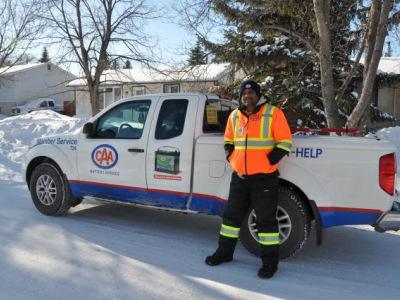The message is simple: Slow Down and Move Over.
The law was designed to protect emergency responders and roadside workers. If you see an emergency vehicle or tow operator up ahead, reduce your speed and move to an open lane if it is safe to do so. If the posted speed limit is less than 80 km/h, you must slow down to 40 km/h. If the posted speed limit is 80 km/h or higher, you must slow down to 60 km/h.
Ewald Friesen is the manager of government relations for CAA Manitoba.
"If you see a fire truck, ambulance, or tow truck ahead, you can never go wrong if you reduce your speed by half and, if safe to do so, change lanes away from the scene," said Friesen.
AAA in the United States conducted a study last year. Over the last 10 years in North America, there have been 100 tow truck fatalities.
If you decide not to slow down when there is an emergency vehicle or tow truck ahead working, you could face consequences.
"The minimum fine is $298 and two demerit points," continued Friesen.
A recent study conducted by CAA found that eight in ten CAA members have heard of the Slow Down, Move Over law. While many drivers abide by the law when approaching an emergency vehicle, the same is not always true for tow trucks.
"Tow truck operators are included in this law," said Friesen.
So the next time you hit the open road and are approaching an emergency vehicle or tow truck, Slow Down and Move Over.
"The penalties are real," he ended. "We have partnered with the RCMP, and they will be doing more enforcement on Manitoba highways. We're very pleased to see they're keen to do this."
Fines can escalate to a maximum limit of $2,000 and/or a one-year driver’s licence suspension issued by a judge.







